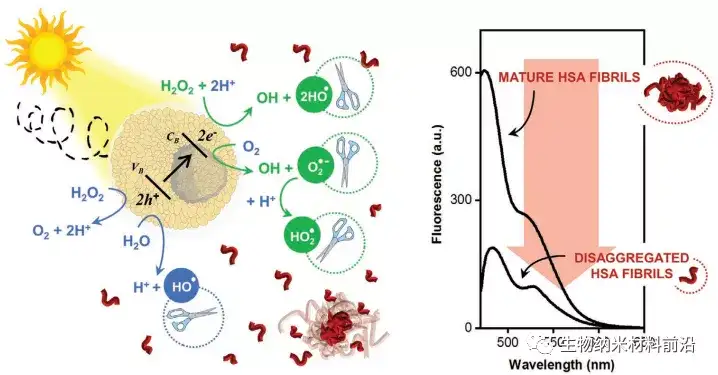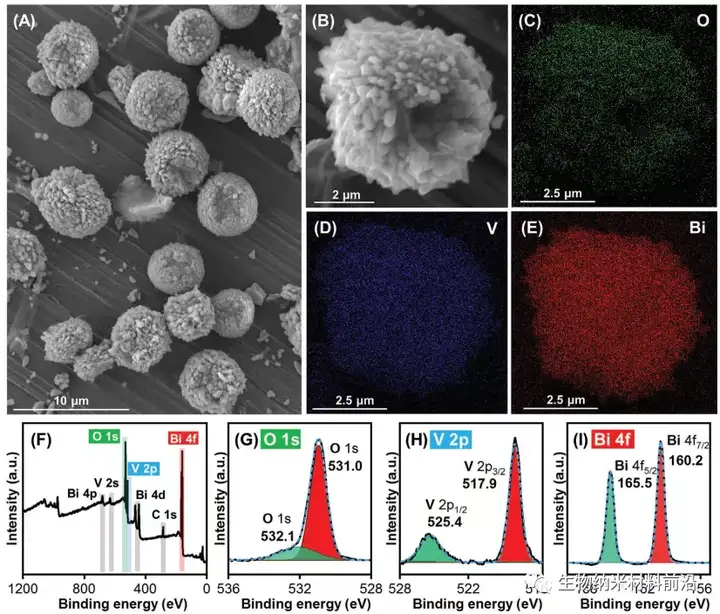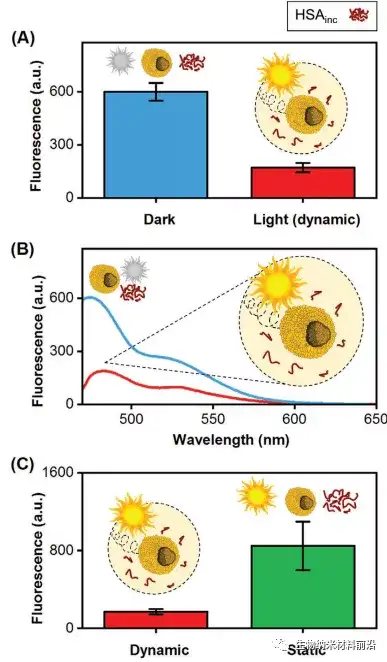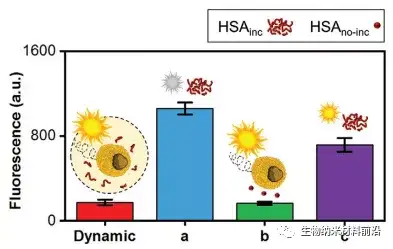AFM: Light-driven micromotors for the treatment of neurodegenerative diseases
QQ Academic Group: 1092348845
Detailed

1. Article overview
Today, micro-robots are considered as attractive mobile carriers for clinical treatment. In this sense, people have high expectations for micro-robots and expect micro-robots to cope with some unsolved medical problems. These micro-robots combine autonomous navigation with the ability to perform specific tasks. Neurodegenerative diseases are incurable diseases that have a huge impact on the quality of life of millions of people. So far, proteolysis (that is, the dissociation of mature protein fibrils at the origin of specific diseases) has been discussed as the possibility of involuntary nanoparticle targeted therapy. Here, a self-driven-light-driven single-component micromotor based on concave BiVO4 microspheres is used to break down protein fibrils. The generation of dynamic reactive oxygen species (ROS) inherent in micromotors promotes effective decomposition. In addition, the spiral trajectories observed for these single-component micromotors may be the reason for the uniform distribution of ROS, which will lead to enhanced protein dissociation effects. This photodynamic therapy of ROS derived from light-driven micromotors with high-efficiency photocatalytic ROS generation and distribution has broad development prospects in the treatment of diseases such as lung cancer or skin cancer.
Two, graphic guide
Today, micro-robots are considered as attractive mobile carriers for clinical treatment. In this sense, people have high expectations for micro-robots and expect micro-robots to cope with some unsolved medical problems. These micro-robots combine autonomous navigation with the ability to perform specific tasks. Neurodegenerative diseases are incurable diseases that have a huge impact on the quality of life of millions of people. So far, proteolysis (that is, the dissociation of mature protein fibrils at the origin of specific diseases) has been discussed as the possibility of involuntary nanoparticle targeted therapy. Here, a self-driven-light-driven single-component micromotor based on concave BiVO4 microspheres is used to break down protein fibrils. The generation of dynamic reactive oxygen species (ROS) inherent in micromotors promotes effective decomposition. In addition, the spiral trajectories observed for these single-component micromotors may be the reason for the uniform distribution of ROS, which will lead to enhanced protein dissociation effects. This photodynamic therapy of ROS derived from light-driven micromotors with high-efficiency photocatalytic ROS generation and distribution has broad development prospects in the treatment of diseases such as lung cancer or skin cancer.
Two, graphic guide

Figure 1. Light-driven BiVO4 micromotor used to break down mature protein fibrils. Reactive oxygen species (ROS, marked with scissors tags) produced during the navigation of BiVO4 micromotors play a key role in the decomposition of mature fibrils. It also includes the fluorescence spectra of thioflavin T (ThT) stained human serum albumin (HSA) obtained under two experimental conditions: i) As mature fibrils in the presence of BiVO4 micromotors, without light irradiation, ii) A micromotor under exposure to BiVO4 as defibrilized light.

Figure 2. The morphology and chemical characteristics of BiVO4 micromotors. A) Scanning electron microscope (SEM) image of a concave spherical BiVO4 micromotor. B), C), D), E) Energy dispersive X-ray (EDX) image of a single BiVO4 micromotor and its corresponding individual mapping. F) XPS spectrum. G-I) High-resolution core-level spectroscopy.

Figure 3. Motion analysis of BiVO4 micromotor under light irradiation. A) Spiral trajectories of BiVO4 micromotors obtained with different concentrations of H2O2. B) The average velocity values for different concentrations of H2O2 (wt%) are as follows: 0.15: 0.4 ± 0.07 BL s-1; 0.35: 0.5 ± 0.1 BL s-1; 0.5: 0.6 ± 0.1 BL s-1; 1: 0.8 ± 0.3 BL s-1, and 2: 1.1 ± 0.3 BL s-1. C) Average speed and D) Time-lapse images of a single BiVO4 micromotor advancing the spiral trajectory under different light on/off modes under 2 wt% H2O2: dark (0-5 seconds; 16-21 seconds) and light exposure (5–15) Seconds; 20–30 seconds). Experimental conditions: solvent = H2O; [Tween 20] = 0.1 wt%; light irradiation = 365 nm; light intensity = 1.674 W cm−2; t = 35 seconds.

Figure 4. BiVO4 micromotor s ability to break down mature protein fibrils: a new fighter against neurodegenerative diseases. A) The effect of light exposure. Thioflavin T (ThT) fluorescence measurement for incubation of human serum albumin (HSAinc), such as i) mature fibrils (blue) without light in the presence of BiVO4 micromotors and ii) depolymerized by light HSA fibrils (red) and exposed BiVO4 micromotors. B) The relative fluorescence spectra of the two experimental conditions in Figure (A). C) The impact of chemical fuels. Dynamic ThT fluorescence detection (red) is related to the effect of light-exposed micromotors in the presence of H2O2 and the results of static micromotors (green) when H2O2 is not added. Experimental conditions: [HSA] = 1 × 10−3 m; [ThT] = 5 × 10−3 m; [H2O2] = 0.5 wt%; [BiVO4 micromotor] = 0.55 mg/mL; solvent: PBS (0.01 m ); Illumination: solar simulator, 30 minutes; N=4.

Figure 5. The key role of BiVO4 micromotors and substitution factors in HSA decomposition. Dynamic ThT fluorescence measurement: a) Original fluorescence intensity of mature fibrils of human serum albumin (HSAinc) incubated without BiVO4 micromotor and light; b) HSA (HSAno-inc) not incubated in the presence of dynamic micromotor ) Monomer; c) H2O2 decomposes HSA mature fibrils under light irradiation. Experimental conditions: [HSA] = 1 × 10−3 m; [ThT] = 5 × 10−3 m; [H2O2] = 0.5 wt%; [BiVO4 micromotor] = 0.55 mg /mL; solvent: PBS (0.01 m ); illumination: solar simulator, 30 minutes; N = 4
Third, the full text summary
In this paper, spherical single-component BiVO4 micromotors with layered shapes and special concave surface defects are prepared. They have light-triggered self-propelled motion, and their navigation is effectively and dynamically modulated in the light on/off switching mode. Their enhanced photocatalytic activity and the subsequent generation of ROS have been used for the instant depolymerization of mature protein fibrils. This concept represents a therapeutic method for neurodegenerative diseases and expands the biology of microrobots that can play a decisive role. Medical applications. This work can foresee the new application of micromotors, which can quickly achieve effective medical treatment for these currently incurable health problems.
This information is sourced from the Internet for academic exchanges only. If there is any infringement, please contact us to delete it immediately.
Third, the full text summary
In this paper, spherical single-component BiVO4 micromotors with layered shapes and special concave surface defects are prepared. They have light-triggered self-propelled motion, and their navigation is effectively and dynamically modulated in the light on/off switching mode. Their enhanced photocatalytic activity and the subsequent generation of ROS have been used for the instant depolymerization of mature protein fibrils. This concept represents a therapeutic method for neurodegenerative diseases and expands the biology of microrobots that can play a decisive role. Medical applications. This work can foresee the new application of micromotors, which can quickly achieve effective medical treatment for these currently incurable health problems.
This information is sourced from the Internet for academic exchanges only. If there is any infringement, please contact us to delete it immediately.
- Previous: Synergistic enhanced e
- Next: A Rising 2D Star: Nove


 Academic Frontier
Academic Frontier